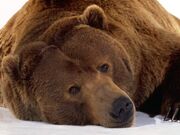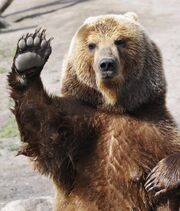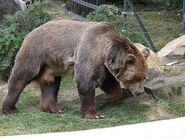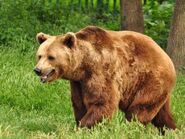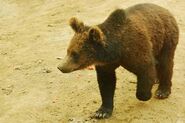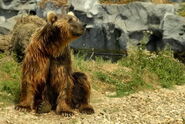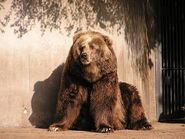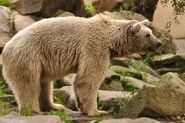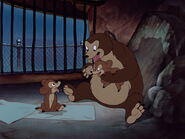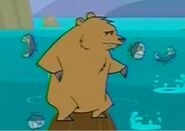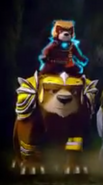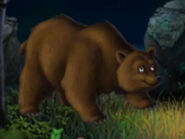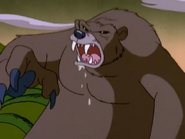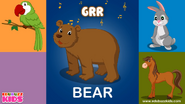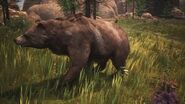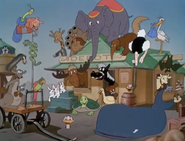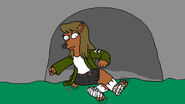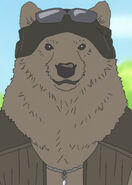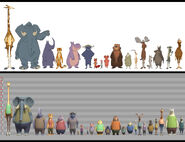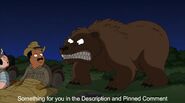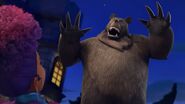Tales of brown bear encounters (Ursus arctos)

surely equal in tallness fishermen's stories of the ones that got away. Its legendary ferocity has resulted in the brown bear being valued as a big game trophy. Unfortunately, it does not always get away and has been hunted almost to extinction in some US States. The shaggy coat has longer hairs on the back and shoulders, sometimes frosted with white - a grizzled look that led to the bears alternate common name of grizzly bear.
Surviving in the harsh tundra is no easy feat and the brown bear will eat almost anything to store up fat for the winter. Tubers, fish and carrion are staples and, in late summer, a treat of berries, fruit and nuts.
A cave or den is chosen as a winter retreat where the bear makes a bed of dry vegetation before going into a state of dormancy, but as its body temperature does not drop this is not a true state of hibernation. In this warm refuge the young are born blind and hairless. They remain with their mother for three to four years.
The Kodiak bear (U. a. middendorffi) is a subspecies of the brown bear, and named after its exclusive habitat, Kodiak Island.
